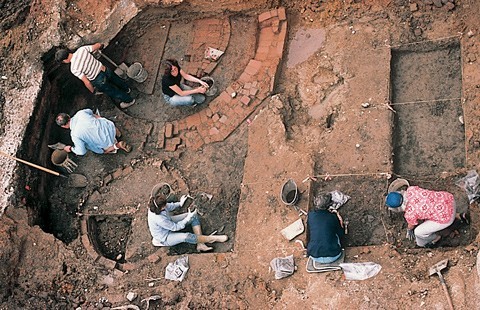
The base of Tildon Easton’s stoneware kiln in Alexandria, Virginia, excavated in 1984 by the city archaeologists. The updraft kiln, built in 1841, measures 12' across. Volunteers are excavating the waster dump, lower right. The adjacent well (at bottom) is of a later date. (Photo, courtesy Alexandria Archaeology Museum.)
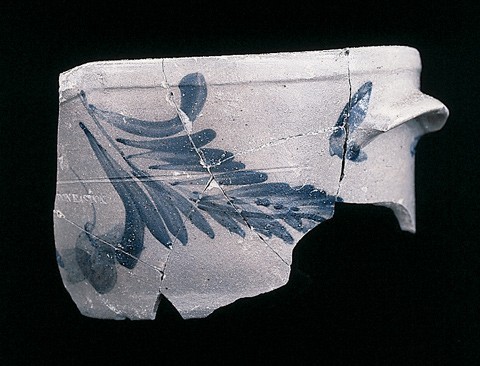
Milk pan, Tildon Easton, Alexandria, Virginia, 1841–1843. Salt-glazed stoneware. D. 10". This milk pan shows the typical squared rim, pouring spout, and lug handle. A version of the three-petal tulip is seen under the spout. Also under the spout is the mark “TILDON EASTON” stamped with 16-point metallic type. (All objects courtesy Alexandria Archaeology; photos by Gavin Ashworth unless otherwise noted.)
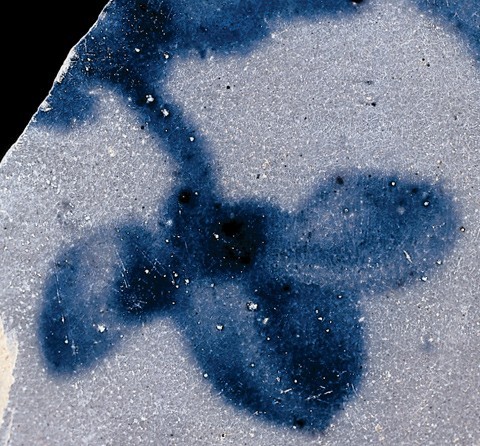
Detail of milk pan illustrated in fig. 4. This three-petal stylized tulip is a typical element of decoration on Easton’s pottery.

Milk pan, Tildon Easton, Alexandria, Virginia, 1841–1843. Salt-glazed stoneware. D. 11". The placement of the fiowers, alternating above and below an undulating vine, is a common design.
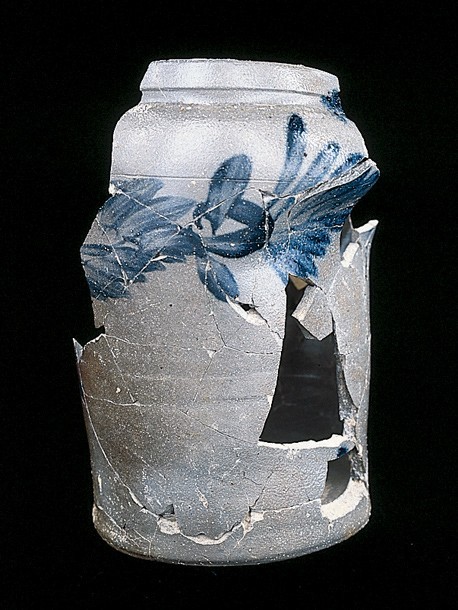
Jar, Tildon Easton, Alexandria, Virginia, 1841–1843. Salt-glazed stoneware. H. 10". The placement of the flowers in line with the foliage is less common.

Jar, Tildon Easton, Alexandria, Virginia, 1841–1843. Salt-glazed stoneware. D. (of rim) 7". This example shows the typical squared rim and lug handle. Leaves surround the ends of the lug handle springing from a garland of leaves, and the typical Easton flower appears on the front and sides.

Milk pan, Tildon Easton, Alexandria, Virginia, 1841–1843. Salt-glazed stoneware. D. 8". The five-petal flower has been found on only two vessels.
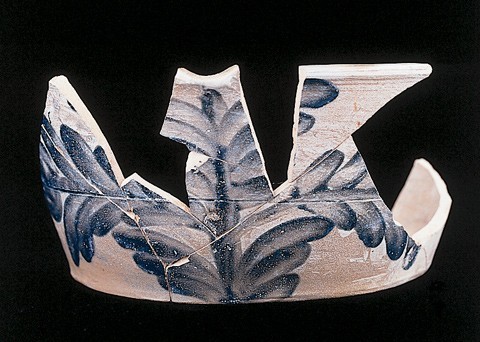
Milk pan, Tildon Easton, Alexandria, Virginia, 1841–1843. Salt-glazed stoneware. D. 11". Flowers appear at the ends of the side branches in this forward-facing design.
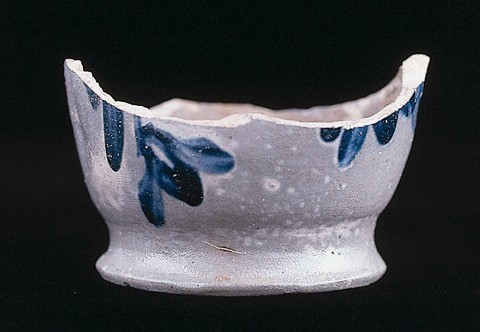
Jar or vase, Tildon Easton, Alexandria, Virginia, 1841–1843. Salt-glazed stoneware. D. (of base) 3 1/2". This unusual vessel has the typical Easton flower but an ovoid shape and flared base.
